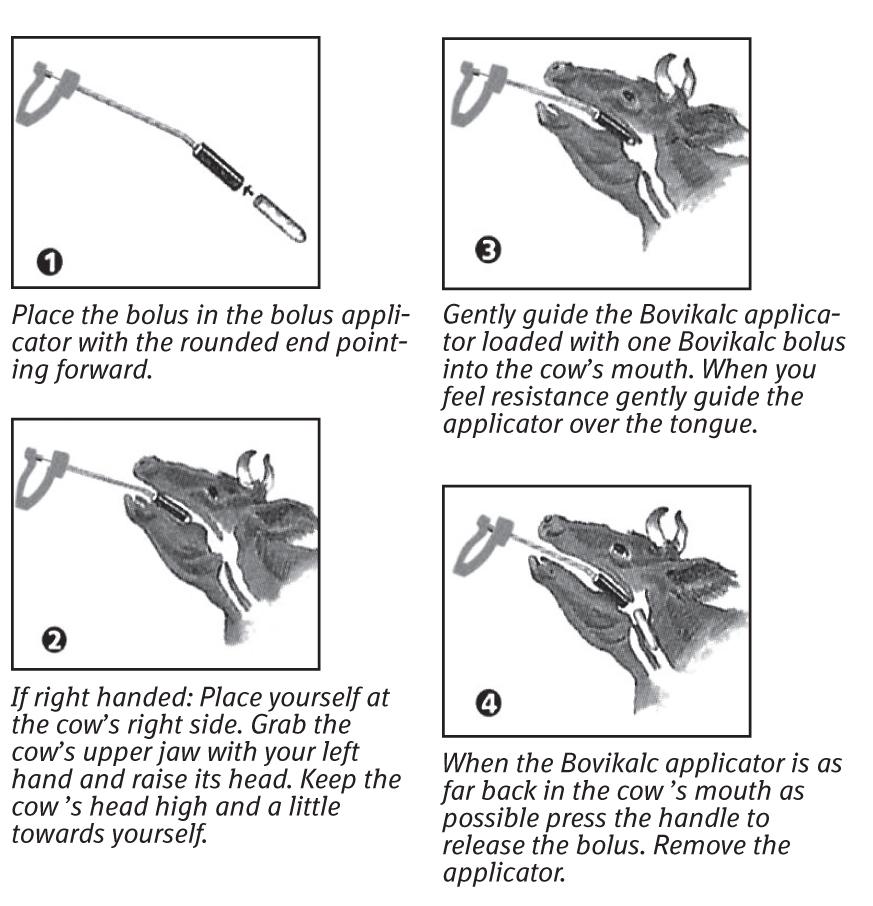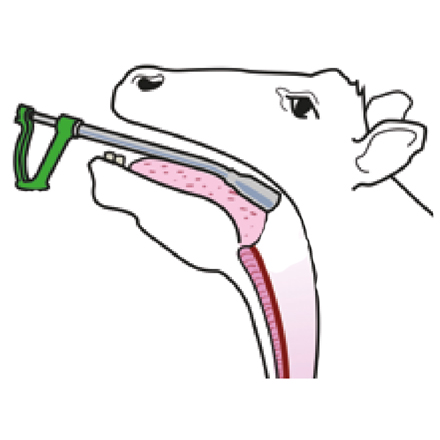Bovikalc Calcium Bolus is an essential source of calcium used for controlling of milk fever in cattle. Cows that have a previous history of milk fever or that are pregnant with twins are susceptible to milk fever, Bovikalc Calcium Bolus can help prevent milk fever in the first place with a bolus given just before or straight after calving and a second bolus given 12 hours later. Bovikalc Calcium Boluses are specially designed with a fat coating which makes it easy and safe to administer and does no damage to the cows throat. Bovikalc Calcium Bolus are also very quickly absorbed into the cow's bloodstream.

Cattle Boluses
These types of wormers are administered orally using product-specific equipment.
Closely follow the manufacturer’s instructions to ensure that the boluses are delivered over the back of the tongue, so they can be swallowed.
Avoid any excess force, as this can cause damage to the throat and do not depress the plunger until you are satisfied with the positioning of the bolus.
It is important that the animal stays as calm as possible and can swallow.
It is very difficult to successfully and safely complete administration if the neck is twisted and the animal is fighting you.

Would you like to send this voucher to the recipient via email?
Yes No